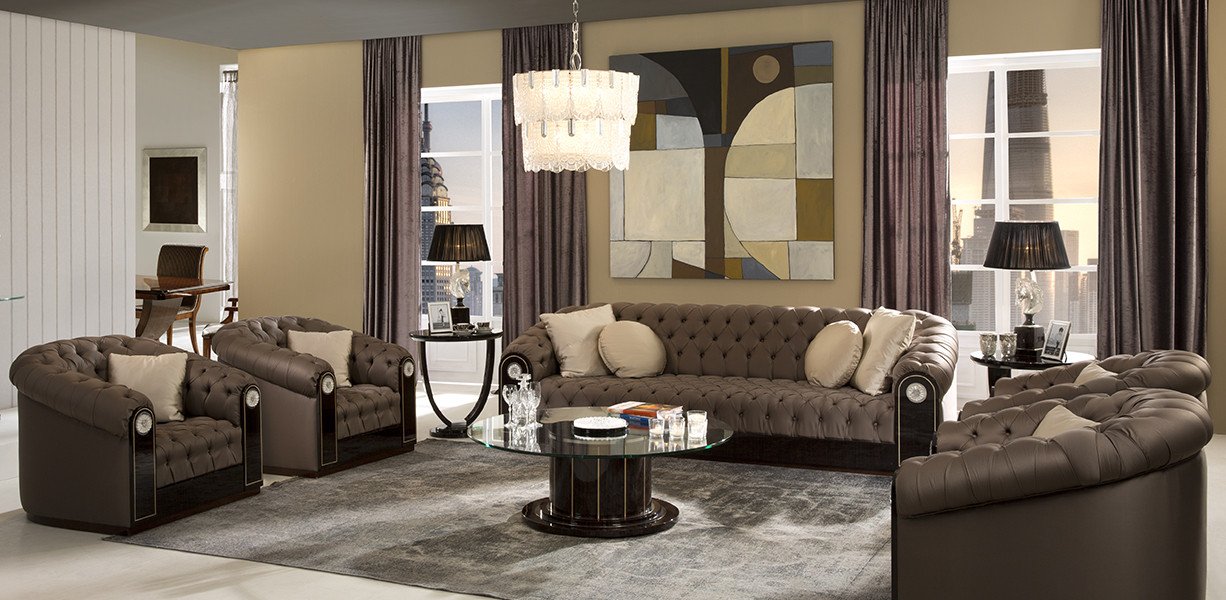
At Mariner Luxury, we know that true luxury in interior design lies in the ability to create unique spaces full of personality. One of the most fascinating and enriching trends in high-end interior design is the fusion of classic and modern styles.
Classic vs. Modern: How to Blend Styles in Luxury Interiors
This combination is an opportunity to reinterpret tradition through innovation, and vice versa. Fusing the classic and the modern allows us to create timeless and deeply personal environments, where elements tell a story and add value. Below, we share our vision and experience on how to achieve this fusion with elegance and balance.

Why combine classic and modern styles in luxury interior design?
The evolution of luxury: tradition and avant-garde
Luxury has evolved over time, and we understand that the grandeur of classic spaces and the freshness of modern environments can coexist in harmony. Tradition gives us a sense of history and permanence, while the avant-garde invites us to explore new forms and technologies.
By combining both styles, we create interiors that exude authenticity and modernity, ensuring that each project reflects the personality of its inhabitants. This evolution of luxury is an invitation to experiment and create without limits.
Advantages of a well-executed aesthetic fusion
The fusion of classic and modern styles offers multiple advantages in luxury interior design. On the one hand, it allows us to take advantage of the ornamental richness and warmth of traditional elements, adding depth and character to spaces.
On the other hand, the incorporation of clean lines and functional solutions typical of modern style adds lightness and freshness. When this combination is carried out with skill and sensitivity, the result is a nuanced environment. At Mariner Luxury, we are passionate about seeing how the coexistence of both styles enriches the aesthetic and emotional experience of each home.
Key features of the classic style in interior design
Traditional shapes, materials and palettes
Classic style is characterized by its timeless elegance and attention to detail, and in our projects, we are inspired by harmonious shapes and noble materials such as solid wood, marble, bronze, and glass.
Color palettes tend to be soft and warm, with shades of cream, beige, gold, and deep green, conveying sophistication. Textiles such as velvet, silk, and linen provide comfort, while ornamental details, such as moldings and quilting, reinforce the sense of luxury.
The value of craftsmanship and symmetry
The classic style is distinguished by the quality of its finishes and the symmetry in the arrangement of elements, which provides order and visual balance. Handmade pieces are therefore works of art that convey exclusivity.
Symmetry, for its part, helps create harmonious and serene environments, where each object occupies a thoughtful place. This attention to detail and craftsmanship is one of the great strengths of the classic style, and an inexhaustible source of inspiration for our projects.
Distinctive elements of modern style in high-end spaces
Minimalism, clean lines and functionality
The modern style is characterized by its emphasis on simplicity and functionality. In our designs, we incorporate furniture with straight lines and a spatial layout that promotes spaciousness and light.
Minimalism is a search for essence, where elements have a purpose and aesthetic value. Neutral colors, such as white, gray, and black, are combined with colorful accents to create dynamic environments. Functionality is important, as we mentioned before, as modern spaces are designed to adapt to the needs of modern life, although this doesn't mean sacrificing comfort or elegance.
Innovative use of materials and technology
At Mariner Luxury, we're passionate about exploring the possibilities offered by the most innovative materials and technologies, and this is where modern style allows us to incorporate surfaces such as stainless steel, polished concrete, and natural stone, which provide a cutting-edge and sophisticated feel. Furthermore, the integration of home automation systems and cutting-edge audio and climate control solutions elevates the luxury experience. These technological elements enhance the functionality of the space and also contribute to creating personalized and adaptable environments.
Keys to merging classic and modern styles with elegance
How to balance proportions, colors and textures
For a successful fusion of classic and modern, balance is essential. At Mariner Luxury, we analyze the proportions of each space, combining voluminous and ornate pieces with lighter, more minimalist ones. We also like to play with the color palette, mixing neutral and sober tones with vibrant or metallic accents to add dynamism. Textures are also important, as the softness of classic textiles contrasts with the coldness of modern materials, creating a rich sensorial experience.
Transitional furniture: the bridge between two worlds
Transitional furniture is our greatest ally when it comes to merging styles. These pieces combine classic and modern elements in their design, materials, and finishes, acting as a visual bridge between the two worlds. For example, a dining table with a steel frame and marble top, or a straight-lined sofa upholstered in velvet, can integrate perfectly into mixed environments.
Lighting, art and accessories as a point of union
Lighting, art, and accessories are the finishing touches that give meaning to the fusion of styles. We like to use lamps that blend classic materials and contemporary shapes, as well as works of art that dialogue with the architecture and furniture. Accessories, such as cushions, rugs, vases, and mirrors, allow us to introduce nods to both styles and personalize each space.
At Mariner Luxury, blending classic and modern styles is an art that requires sensitivity and a passion for design. We love accompanying our clients on this creative journey, helping them create unique and vibrant homes where tradition and innovation meet and enhance each other.